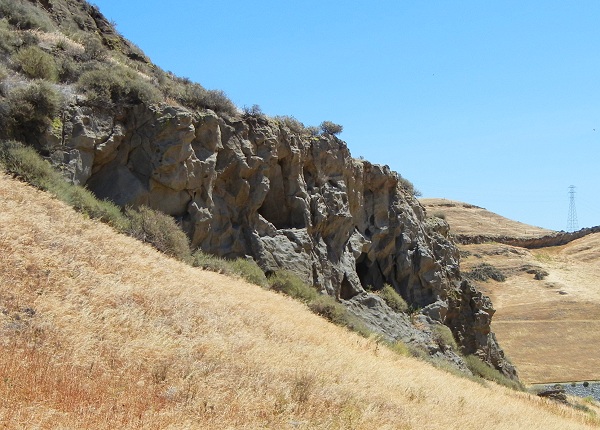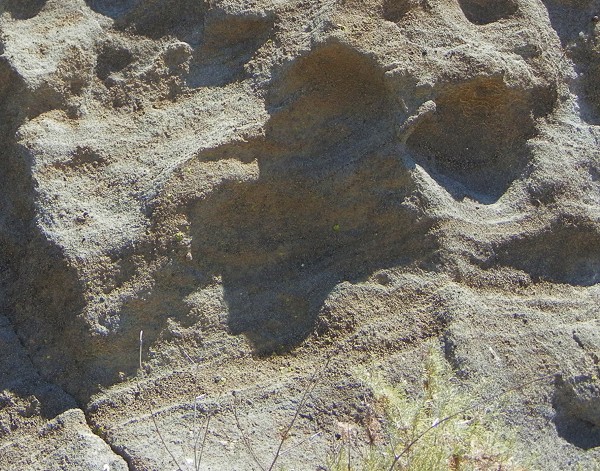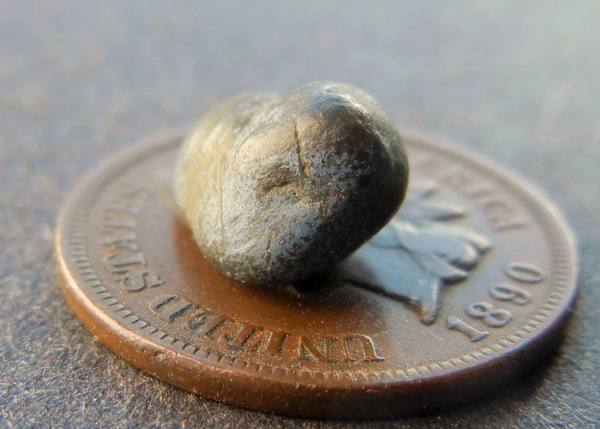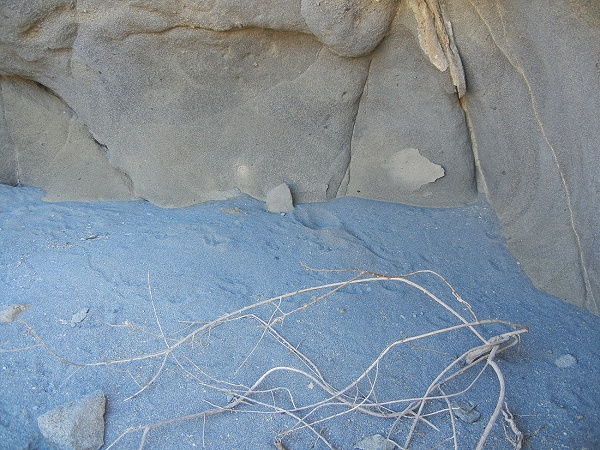Last weekend I was part of a field trip through the northernmost part of the Diablo Range, the high Los Medanos Hills north of Mount Diablo that overlook Suisun Bay and western Delta. There is a lot going on there, geologically speaking, that was hard to completely absorb despite the best efforts of our guide, who has spent more than 40 years in these rocks. But I was impressed with the personality, for lack of a better word, of several rock units we saw that day. Let me show you one of them: the blue rock called the Neroly Sandstone.
One of our stops was near Bailey Road, an offbeat route through these hills known to locals as the one between Willow Pass and Kirker Pass, connecting east Concord and west Pittsburg. The state-of-the-art Keller Canyon Landfill is there, and we got a guided tour of its operations as well as its geologic setting. At our first stop we visited an outcrop of the Neroly Sandstone, which is the cliff-forming unit exposed in these hills.
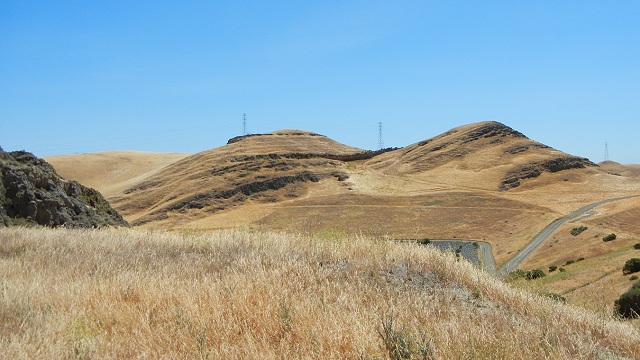
The Neroly got its name in 1930 from an old train stop east of here. In 1949 another geologist renamed it the Neroly Formation. By either name, it's lumped into the San Pablo Group along with the underlying Cierbo and Briones Formations. It's considered the equivalent of the similar Etchegoin Formation farther south near the Kettleman Hills. It has been assigned a Pliocene age, roughly 4 million years. As we approached the outcrop, some of us noted its bluish color but others couldn't see it.
Getting still closer didn't help a lot. It seemed to be both brown and blue, and on a day with a bright, open sky shadows naturally have a bluish cast. But here we could see its nature: a thick sequence of coarse sandstone with thin, discontinuous bedding, the kind of thing laid down by rivers. Our guide explained that fossils of plant debris are commonly found in the Neroly. That made me prick up my eyes, although this particular outcrop was barren of fossils.

